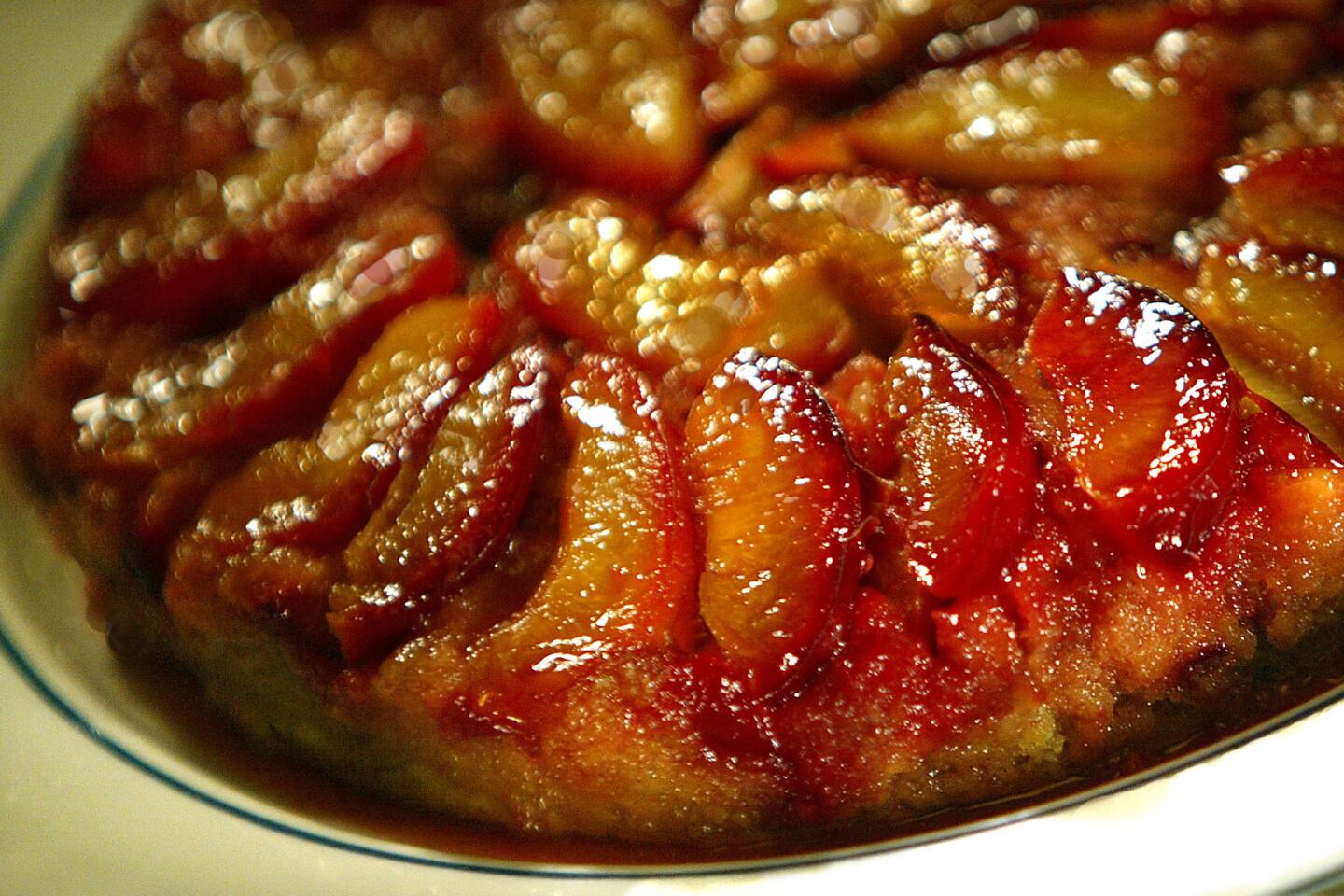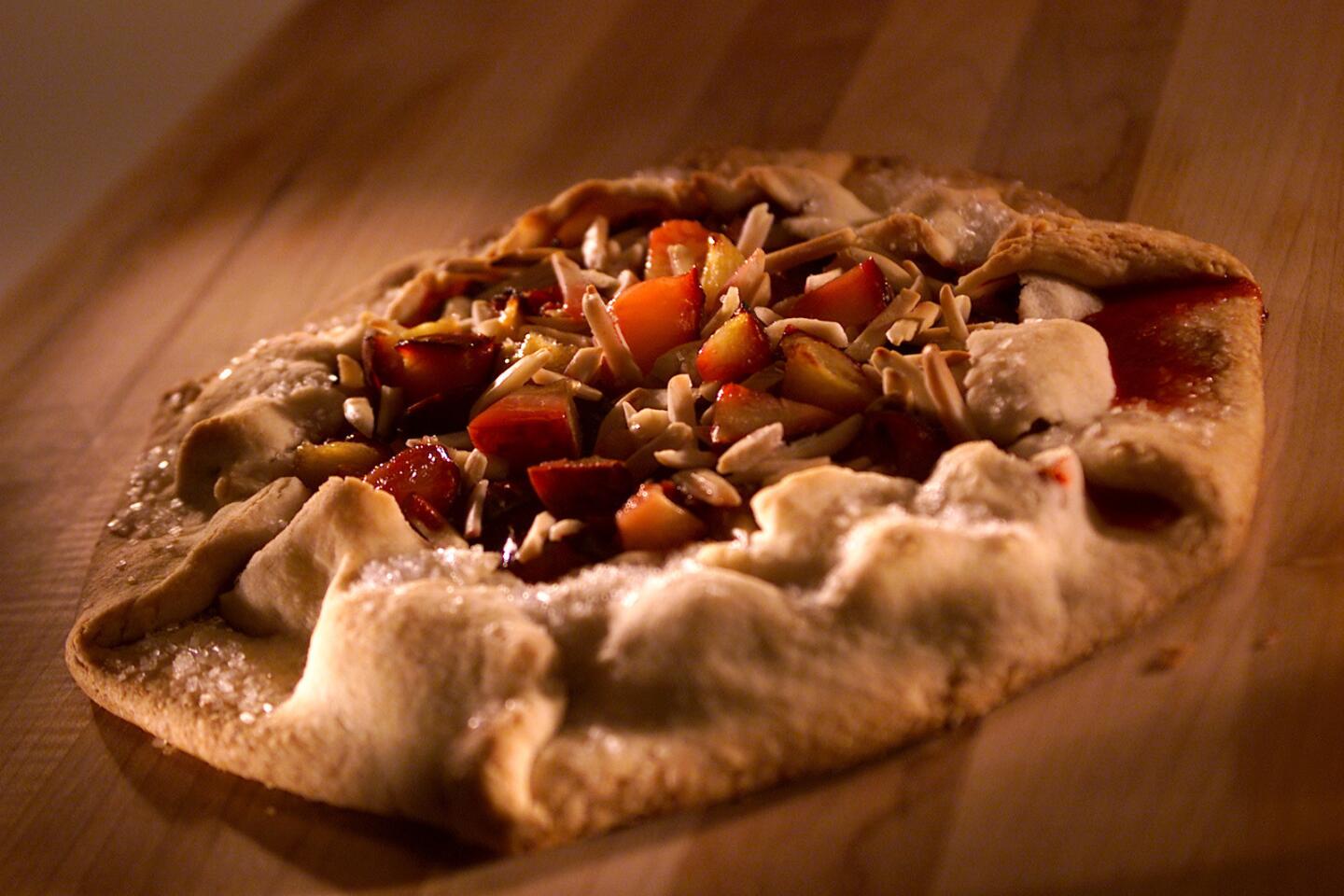Sweet, tart plums are the perfect fruit for summer, with 8 recipes
- Share via
While so much of the produce department seems headed toward more standardization and less variety, plums are a riot. Not only are there traditional varieties spanning the gamut of skin and flesh color – pale green to dark purple skin, pale gold to deep crimson flesh – but now there are the increasingly popular plum-apricot crosses, called Pluots or apriums, depending on the specifics of their heritage.
But if you ask real fruit fans about plums, the first name you’ll probably hear is the Santa Rosa. This is an antique variety that somehow has managed to avoid being tossed to the curb. It’s nowhere near as plentiful as it once was, but it can still be found quite readily at most farmers markets.
The Santa Rosa was developed by Luther Burbank, one of the most prolific plant breeders ever, responsible for developing the russet potato that bears his name as well as more than 800 varieties of fruits and vegetables.
But while he is probably best remembered for that potato -- it and its progeny are still the most widely planted varieties in the world -- fruit lovers would argue that his crowning achievement was the Santa Rosa plum. Introduced in 1906, the Santa Rosa is still the gold standard for farmers market plum flavor, though it has fallen out of favor commercially.
As late as the 1960s, the Santa Rosa still accounted for more than a third of California’s plum harvest; now it has dropped to only a percent or two, as growers have abandoned it in favor of bigger, firmer fruit. Fortunately, they are still available at farmers markets. And after you bite into a rich, tangy Santa Rosa, almost anything else tastes insipid.
If you want real fruit cognoscenti street cred, though, search out another of Burbank’s plums, the Elephant Heart. While the Santa Rosa has golden flesh and dark red skin (not too dark, it’ll be overripe), Elephant hearts are crimson, almost black, all the way through. The wild flavors of the Santa Rosa become almost overpowering in the Elephant Heart.
Because of the tender texture of the flesh of a ripe plum, it doesn’t lend itself to cooking as well as, say, a peach or nectarine. But with a little care, you can capture its sweet-tart flavor in all of its glory.
How to choose: Plums should be slightly soft and fragrant. If there are white spots on the skin, don’t worry. Those are just naturally occurring yeasts that have collected there. Actually, it’s a good indicator that the fruit hasn’t been overhandled.
How to store: If they’re a little too firm, leave plums at room temperature for a day or two and they’ll continue to ripen. Once they’re fully ripe, refrigerate them.
Are you a food geek? Follow me on Twitter @russ_parsons1
More to Read
Eat your way across L.A.
Get our weekly Tasting Notes newsletter for reviews, news and more.
You may occasionally receive promotional content from the Los Angeles Times.
















